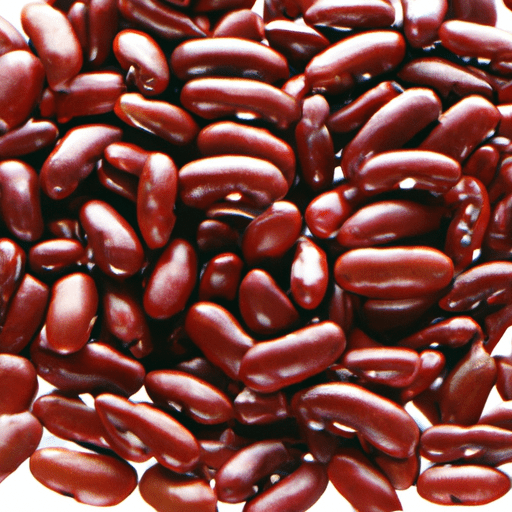All About Kidney Beans: A Versatile and Nutritious Ingredient
Kidney beans, commonly known for their unique shape and vibrant color, are a staple ingredient in cuisines around the world. These nutrient-packed legumes are not only delicious but also offer a wide range of health benefits. In this blog post, we’ll explore everything you need to know about kidney beans, from their taste and common uses in cooking to their impressive nutritional value and intriguing history.
Taste and Texture
Kidney beans have a robust and earthy flavor with a smooth, creamy texture. They possess a dense and slightly mealy consistency when cooked, making them perfect for hearty dishes and stews. The beans soak up flavors beautifully, making them a versatile ingredient that pairs well with various spices and ingredients.
Common Uses in Cooking
Kidney beans are an essential part of many traditional dishes worldwide, thanks to their versatility and rich flavor profile. Here are some popular ways kidney beans are enjoyed:
- Chili: Kidney beans are a key ingredient in the beloved chili con carne, often combined with ground meat, tomatoes, spices, and other vegetables.
- Soups and Stews: These beans add a hearty and satisfying element to soups and stews, such as minestrone, bean chili, and red beans and rice.
- Salads: Kidney beans are a fantastic addition to salads, providing a boost of protein and fiber. They work particularly well in Mediterranean-inspired salads or mixed bean salads.
- Bean Burgers: Mashed kidney beans are often used as a base for vegetarian bean burgers, offering a meaty texture and a natural earthy taste.
Nutritional Value
Kidney beans are a nutritional powerhouse, packed with essential vitamins, minerals, and fiber. Here’s a breakdown of their impressive nutritional profile:
- Protein: Kidney beans are an excellent plant-based source of protein, making them a valuable addition to vegetarian and vegan diets. A one-cup serving of cooked kidney beans provides about 15 grams of protein.
- Fiber: These legumes are loaded with dietary fiber, known for its role in promoting healthy digestion and preventing constipation. One cup of cooked kidney beans contains around 11 grams of fiber.
- Vitamins and Minerals: Kidney beans are rich in iron, magnesium, potassium, folate, and vitamin K. These nutrients support various bodily functions, including maintaining healthy bones, aiding muscle function, and contributing to red blood cell production.
History and Fun Facts
Kidney beans are believed to have originated in Central and South America, where they have been cultivated for thousands of years. They were later introduced to Europe by Spanish explorers, becoming an integral part of many traditional dishes across the continent.
Interestingly, the name “kidney bean” is derived from its resemblance to the human kidney in shape and color. This fascinating connection has led to kidney beans being associated with promoting kidney health, but it’s important to note that more research is needed to establish any direct correlation.
Kidney beans are not only a versatile ingredient that enhances the flavor and texture of various dishes, but they also boast an impressive nutritional profile. Incorporating kidney beans into your meals is an excellent way to increase your intake of protein, fiber, and essential vitamins and minerals.
Next time you’re at the grocery store, do yourself a favor and pick up a bag of kidney beans. Whether you choose to make a hearty chili, a satisfying bean salad, or a protein-packed soup, these legumes are sure to leave you satisfied and nourished.
So, why not explore the countless possibilities kidney beans offer and get creative in the kitchen? Your taste buds and your body will thank you for it!
Kidney Bean
Origin: Kidney beans, scientifically known as Phaseolus vulgaris, are native to the Americas and have a long history of cultivation in Central and South America. They are believed to have been domesticated in Peru around 8,000 years ago. Kidney beans were later introduced to Europe by Spanish explorers in the 15th century.
Common Uses: Kidney beans are a versatile ingredient used in a variety of dishes worldwide. They are commonly included in recipes for chili, soups, stews, and casseroles. Kidney beans can also be used in salads, as a nutritious addition to veggie burgers, or blended into spreads like hummus. In some cultures, kidney beans are a staple ingredient and can be found in traditional dishes such as red beans and rice or rajma (Indian kidney bean curry).
Nutritional Benefits: Kidney beans are highly nutritious and provide several health benefits. They are an excellent source of plant-based protein, making them an important food for individuals following vegetarian or vegan diets. They are also high in dietary fiber, which can aid digestion and promote feelings of fullness. Additionally, kidney beans are a good source of essential minerals like iron, potassium, and magnesium. They also contain various vitamins, such as folate and vitamin K.
Unique Properties: Kidney beans get their name from their distinctive shape and color, resembling a kidney. They have a smooth texture and a mild, earthy flavor. One interesting fact is that raw kidney beans contain a toxin called phytohemagglutinin, which can cause digestive issues if consumed. Therefore, it is essential to cook kidney beans thoroughly to ensure the removal of this toxin. Canned kidney beans are already cooked and safe to eat without any preparation.
Historical Significance: Kidney beans have played an important role in the culinary traditions of various cultures throughout history. They were cultivated by ancient civilizations in the Americas, including the Aztecs and Incas, who relied on them as a dietary staple. Kidney beans were later introduced to Europe during the Columbian Exchange, which brought about significant changes in global cuisine. Today, kidney beans are enjoyed worldwide and contribute to a diverse range of recipes.




Use the share button below if you liked it.
It makes me smile, when I see it.